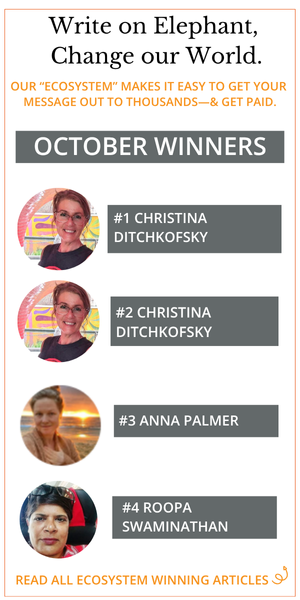View this post on Instagram
Check out Elephant’s Continually-updating Coronavirus Diary. ~ Waylon
~
Feelings: our Achilles heel, our sunny spot in the woods, our refuge, our torment.
We are told we “shouldn’t be sad” or “shouldn’t get mad,” asked, “How can you feel that way?” and admonished, “Relax!”
We learn to stuff our inconvenient and improper emotions down, to reinterpret them, to project them onto other people, and fear our experience of them. We become a twisted caricature of ourselves, lashing out in anger when we are scared, going numb when we want to connect, and sometimes even taking pleasure in other people’s misfortune.
This isn’t always the case, of course, and it is more or less true for each of us, but it is a rare human heart that simply feels what it feels.
Why? In their most basic sense, emotions in human beings and other sentient creatures evolved as a wonderful survival mechanism. Fear in a herd of deer activates them, joins them together to work as a formidable, cohesive team and thus protects them from predators. A sense of peacefulness in the same herd allows them to relax, graze, and gather strength for the next crisis. So why don’t people do the same?
Thanks to the complexity of the human brain, “survival” becomes a concept that is open to interpretation, making our responses to perceived threats more dynamic, more layered, and also potentially a lot more dangerous and unproductive. But it doesn’t have to be this way. If we can learn to differentiate between the emotions we feel, the judgments we experience about them, and the subsequent actions we take, we can clear a lane on the cluttered highway that runs from our brains to our hearts.
The first thing we can focus on is the strange truth that what we feel is not who we are. Who we are lies beneath our feelings, and is like the earth on a clear sunny day. We have our own natural, unique terrain, our hills, our fields, our streams and lakes, and everything is fully formed and as it should be. Over this lies a layer of clouds—our emotions. They move and shift, always changing, casting shadows on the earth below, never actually altering the landscape, but often altering our perception of it.
If you hold this image in your mind, it is possible to stand on your inner earth and observe those clouds passing overhead. You will quickly sense the separation between the two, the solidity of the first and the transitory nature of the second. Notice that the acknowledgment of this space, just that simple shift in consciousness, provides relief.
Next we can call our emotions by their proper names. As we sit back and watch them we may see what looks like a big, black storm cloud and think to ourselves “anger,” but on closer inspection realize it’s more the soft grey of simple sadness. As we wouldn’t judge a cloud for being big and white, or thin and scudding, so we should not judge whatever emotion we can discern. It is the judgement of the emotion, and not the emotion itself, that creates the lion’s share of our discomfort.
I’ll give you an example. If I fail at an important task, I might feel ashamed. I judge my shame as weakness and that turns it into anger. I don’t want to feel my anger, so I morph it into anxiety, or cast it outward and turn it into blame. If I turn it into anxiety, then it transforms yet again into helplessness, and if I turn it into blame it changes into guilt, because I know on some level that my anger is misplaced.
In a split second, my simple emotion of shame has shape shifted so dramatically that its essence is lost. I am trapped in an exponentially expanding spiral of other emotions meant to compensate for the original one. Had I the wherewithal to experience that shame, call it what it was, and sit with it until it passed, I’d be in much better shape.
So, fine, we observe and name our emotion without judgment and then what? Then we get to the good part—because we get to choose our response. By slowing down our reactivity through observation, we give ourselves a chance to be intentional about how we deal with what we feel. If there is one thing I try and teach clients, it is this: we don’t get to choose how we (or others) feel, but we do get to choose what to do about it. If I am angry, but can sit with my anger and watch it for a few moments, I will most certainly act differently than if I responded to it immediately.
Feelings are not the enemy (though they can certainly be painful), our knee-jerk responses to them are. One of the best things about feelings is that they come and go. It is impossible to remain in an emotionally static state. Even the most intense emotions like grief will shift and change in intensity and quality and finally, like a terrible storm, clear out of the atmosphere and let the sun shine even more brightly than it did before. Of course, there is always another storm on that sunny day’s heels, but we come to learn eventually that we can survive it. We can survive it all.
The next time a powerful negative feeling rises up and threatens to overwhelm you, go somewhere quiet and let it be. Feel your pain. Watch it. Name it. Decide what you want to do with it, whether that means reaching out to someone you trust, moving your body, writing a letter, or screaming until your voice cracks.
Know that this will pass. Notice when it does. Try to find some gratitude for the whole process and repeat as necessary.
~

 Share on bsky
Share on bsky




Read 0 comments and reply